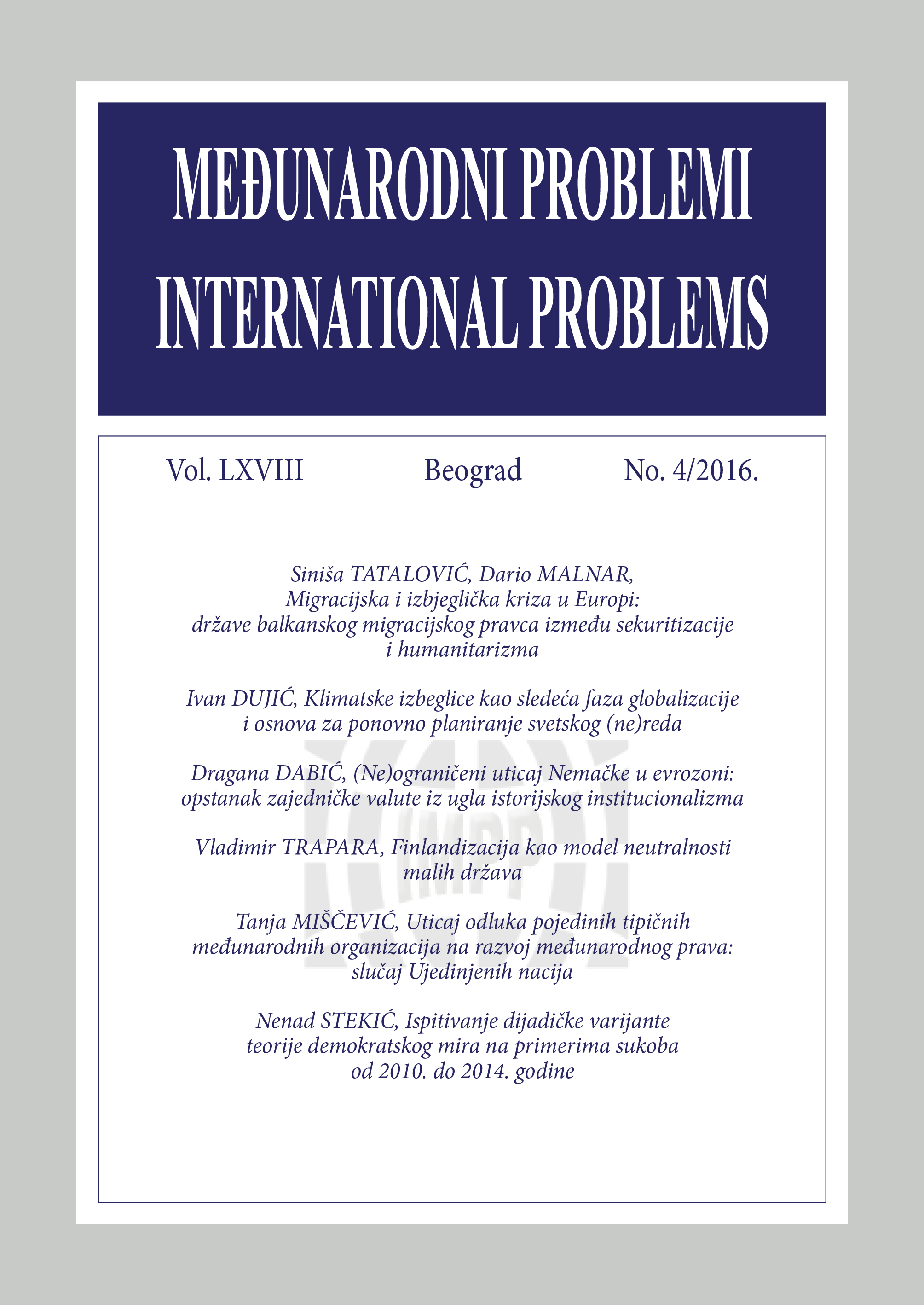Finlandizacija kao model neutralnosti malih država
Finlandization as a model of neutrality of small states
Author(s): Vladimir TraparaSubject(s): Politics / Political Sciences
Published by: Институт за међународну политику и привреду
Keywords: finlandization; neutrality; small states; national interest; Finland
Summary/Abstract: The paper analyses finlandization as one of the models of neutrality of the small states in great powers conflicts. From the characteristics of Finlandʼs neutrality during the Cold War, the author derives elements for the definition of finlandization, and determines necessary conditions for its feasibility. Also, the differences between finlandization and other models of neutrality of the small states (“buffer” state and “grey zone”) are determined, while the model itself is connected to several dichotomies of neutrality (neutrality in war and peace, military and political, permanent and ad hoc, guaranteed and unilateral, de jure and de facto, active and passive). Besides Finland, several auxiliary cases are tested: Yugoslavia on the eve of the Second World War, Denmark and Sweden during the war, contemporary Azerbaijan, Uzbekistan and Serbia. The conclusion is that the successful case of Finlandʼs neutrality during the Cold War offers good lessons for the foreign policy of any small states which end up in a sphere of influence of the great power with which it has a conflict of national interests.
Journal: Међународни проблеми
- Issue Year: LXVIII/2016
- Issue No: 4
- Page Range: 351-389
- Page Count: 39
- Language: Serbian

